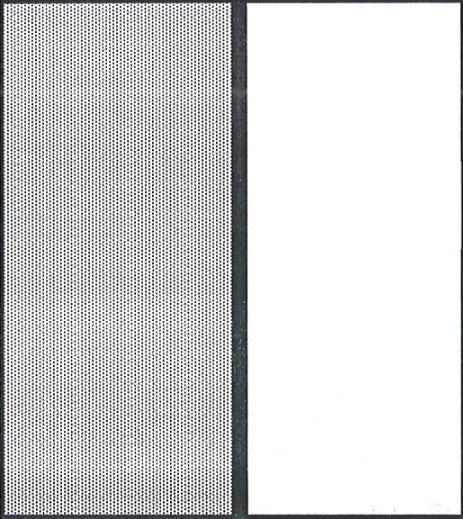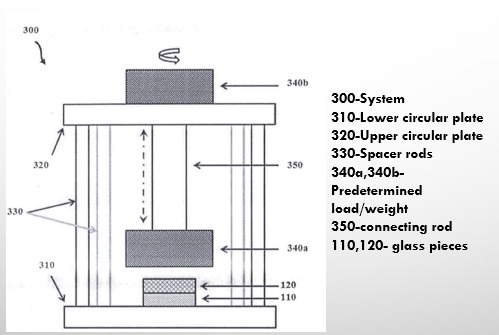According to the present invention, a method and system for fabricating a stacked glass comprising an electrically conducting interface is disclosed. The present invention uses the softening point temperature of glasses, an intrinsic property of glassy phase, to fabricate a strong and stable interface between two glasses. The method comprises the steps of placing a second glass on a top of a first glass thereby making at least one side surfaces of glasses touch each other, simultaneously heating the glasses and applying a load on the top of glasses and cooing the glasses thereby forming a stacked glass with an electrically conducting interface between two glasses. The fabricated glasses are used as electrode materials, electrolytes in solid state energy storage devices. The interface reduces the contact resistance between glasses and increases the performance and efficiency of all solid-state electrochemical energy storage devices.
In all-solid-state electrochemical energy storage devices, such as lithium-ion or lithium-metal batteries, high interfacial resistance between electrode and electrolyte materials significantly reduces charge transport efficiency and overall device performance. Traditional solid interfaces are prone to contact resistance, mechanical strain, and material incompatibility, especially when different phases or compositions are used. This leads to lower energy efficiency, faster degradation, and increased fabrication complexity.
- Seamless, Low-Resistance Glass Interfaces: The technology enables formation of electrically conducting interfaces between glass materials without additional interfacial resistance. This is achieved using softening point fusion, where controlled heating and pressure allow one glass layer to partially flow and fuse with another, forming a strong, conductive, and mechanically stable bond.
- Tailored Glass Composition and Compatibility: Glasses are custom-formulated with varying molar percentages of Lithium Fluoride, Vanadium Pentoxide, and Aluminium Metaphosphate to create ionic or mixed conductors. Their closely matched thermal expansion coefficients reduce mechanical strain, enabling durable, crack-free interfaces that support long-term performance and reliability.
- Scalable, High-Performance Fabrication Process: The vertically or horizontally stacked configuration, combined with gravity or mechanical pressure, allows scalable assembly of multi-layered glass electrodes. The resulting structures exhibit improved DC conductivity, structural integrity, and are ideal for solid-state batteries and advanced electrochemical energy storage systems.
The prototype consists of glass samples fabricated using varying molar percentages of Lithium Fluoride (10%-80%), Vanadium Pentoxide (0%-70%), and Aluminium Metaphosphate (5%-20%). These glasses are vertically stacked on a support plate and subjected to controlled heating between 250°C-350°C while applying a pressure equivalent to 50-100 g using gravity or mechanical means. The stacked structures were characterized using impedance spectroscopy for electrical properties and X-ray diffraction (XRD) for structural analysis. Coefficient of thermal expansion (CTE) and DC conductivity were measured before and after stacking, confirming a strong, electrically conducting interface with no observable interfacial resistance and validating the approach through composite conductivity theory.
Stack designed tested in the cell needs optimization of materials and cell dimension for improved performance.
3
The invention enhances the performance and safety of solid-state batteries by enabling efficient, low-resistance interfaces between glass-based electrode and electrolyte materials. This leads to longer-lasting, more reliable, and faster-charging energy storage systems while reducing risks like thermal runaway and short circuits. It also supports renewable energy storage for grid-scale solar and wind applications and accelerates adoption of electric vehicles, portable electronics, and smart grid infrastructure, advancing sustainable energy and reducing carbon emissions.
- Battery Technology: Solid-state lithium-ion and lithium-metal batteries
- Energy Storage: Supercapacitors, hybrid capacitors
- Consumer Electronics: Smartphones, laptops, wearable devices
- Electric Vehicles (EVs): Safer, higher-energy-density battery modules
- Renewable Energy Systems: Grid and off-grid energy storage solutions
- Defense and Aerospace: High-reliability energy storage for critical missions
Geography of IP
Type of IP
202223033800
544095


